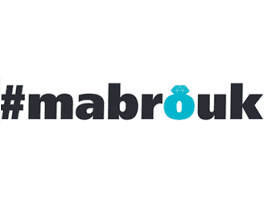“We have to begin to explain the truth that if you support Palestinianism, you’re supporting an evil. You’re not supporting a good.” –
Alan Dershowitz
DAVE GORDON
Alan Dershowitz, the prominent Jewish American lawyer and law professor, known for his work in U.S. constitutional and criminal law, had a few choice words about New York Mayor Zohran Mamdani.
He spoke on October 27th at the second annual Rage Against the Hate conference at the Museum of Jewish Heritage in New York City. The event was organized by Shurat HaDin, the Israel Law Center. The conference focused on combatting anti-Semitism and anti-Israel sentiment through strategy sessions, legal action, and public opinion. Dershowitz was joined by former Mossad chief Yossi Cohen, Australian broadcaster Erin Molan, former IDF commander Yoseph Haddad (a Christian Arab-Israeli citizen who is a journalist and pro-Israel advocacy activist) Anne Bayefsky, President of Human Rights Voices, and other prominent figures in law and pro-Israel advocacy.
Dershowitz on the Jews and Mamdani
Dershowitz asked, “How did the new mayor gain a leading edge? The answer is Jews,” he proclaimed.
“We have a deep problem within the Jewish community. A troubling sense of self-criticism runs deep within the Jewish community today. I saw it when I taught at Harvard for 50 years. I saw it among the faculty. I saw it among the students. We’re now seeing it among the voters. It’s absolutely horrible.”
Dershowitz also blames Andrew Cuomo for not mounting a strong enough campaign.
The professor emeritus at Harvard law school, author, and civil liberties advocate, alleged that the Mamdani campaign was likely bankrolled by “Qatari money, other foreign money, George Soros money, and dark money (political spending from undisclosed sources).”
He pledged that he and his colleagues, will go into every rock to find the name of every contributor in order to follow the money.
Dershowitz said that what most frightens him is not Mamdani’s possible poor policy decisions. It’s the prospect that people will like him more if some of his policies do succeed.
“What frightens me most is that Mamdani may end up being a good mayor. Let me give you the analogy. I’m not analogizing Mamdani to Hitler, but I’m telling you that in 1932, many people – remember, he only got 32 percent of the vote, Hitler – many people voted for Hitler, not because he was an anti-Semite, but despite that fact, because Hitler promised to restore the economy and [reduce] unemployment. And for the first two years, he did that. He was successful,” Dershowitz said.
“And that’s what gave him the ability to turn people who didn’t care about anti-Semitism into overt anti-Semites because they liked what Hitler had done for the people of Germany.”
“Mamdani,” Dershowitz added, “has brought about international anti-Semitism.”
Dershowitz added, “What Mamdani says about Israel, could never in America or in American college campuses be said about other minorities. Indeed, when you accuse Mamdani of supporting terrorism because he refuses to denounce ‘Globalize the Intifada,’ his first response is Islamophobia.
“I can tell you one thing, that when you say, ‘Globalize the Intifada,’ you are encouraging people to do another 9-11 or another October 7th. And when you refuse to condemn globalizing the Intifada, you are complicit in terrorism.”
Nitsana Darshan-Leitner, Israel Law Center
Israeli lawyer Nitsana Darshan-Leitner, the founder and president of Israel Law Center, told conference attendees that her next litigation target is the Old Gray Lady, a nickname for the New York Times (which comes from the color of its pages). “The New York Times is aiding and abetting Hamas,” she said, making it clear her intention is to take them to court for “blood libel and defamation.”
Israel Law Center uses legal action worldwide to fight for the rights of victims of terror, and to seek compensation for violations of international law.
Cases include suits against Al Jazeera (a Qatari state-funded media conglomerate and news organization) over its alleged ties to Hamas, and a high-profile lawsuit against the Palestinian Authority and PLO in the U.S., which initially resulted in a $655 million USD award for terror victims (later overturned). Other notable cases include suing Airbnb over delisting Jewish-owned properties in Judea and Samaria, and legal action involving Facebook regarding incitement and hate speech.
Recurring Themes
A recurring theme surfaced throughout the talks – the need to combat lies, communicate the Israel story better, and be attuned to what Israel’s enemies seek to do.
“The first and most important thing that we need to do collectively is to listen what they (Islamists) themselves say,” said Jonathan Conricus, a Swedish Israeli spokesperson and media commentator. He served as an officer in the IDF, where her served for 24 years, and is the former international spokesman of the IDF. He is now based in Washington, D.C. and is a regular fixture in the media defending Israel’s position.
“Islamists,” Conricus said, “want to dominate and take control of Western countries, and that they’re not shy in achieving it. They are politically organized and disciplined. They are funded. They have powerful mouthpieces, some of them very eloquent and fluent in King’s English.” “Elected officials need to understand that Israel is the Off-Broadway show. The real show, the real Broadway, from a Muslim Islamist perspective, is the West,” said the senior fellow at the Washington-based think tank Foundation for Defense of Democracies.
Preventing radicalization is a part of what Conricus calls “the battle of narratives,” which he added “with great regret, Israel isn’t yet really fighting this battle well.”
He suggested that more of Israel’s budget is needed for “narrative and media warfare” to “equip freedom fighters, defenders of democracy, [and] good people around the world, with data and information.”
British journalist Melanie Phillips said that Israel’s enemies “have been able to hijack the language and weaponize the West’s post truth, post moral culture, to push their agenda that Israel and the Jews are on the wrong side of just about everything that is good and right and true.”
The author and columnist in The Times said in her speech that the big lie that we are all up against is the notion that peace and justice in the Middle East will come with a Palestinian state.
Citing a need to “seize back control” of the narrative, it was her belief that those in the West must speak out against the media and governments that are lying to them.
Former news anchorman and Israeli government spokesman Eylon Levy (originally from England) said that the “anti-Zionist grip on institutional power hoodwinked the world into believing their libel, and they use that power to commit an industrial act of gaslighting,” – which he calls “Gazalighting.”
“They have trashed Israel’s global reputation, made it toxic. They have delivered Hamas a tremendous victory in the form of Israel’s tarnished global standing,” he said.
Shifting the Narrative
Ysabella Hazan, a young lawyer from Montreal, said that “the way to shift the narrative on campus is to meaningfully engage with narratives we face, and to completely shift the dynamic of being responsive.”
She added that Zionist engagement must be pro-active. “Our efforts are strong, but our messaging needs to reflect who we are as a nation and our indigenous connection to Israel, rather than pointing out anti-Semitic incidents and issuing strongly worded statements, in hopes of the administration doing something. Whatever we hope administrations will do won’t actually shift the culture. It’s a cultural problem.”
Dershowitz offered his own ideas for pro-active shifting of messaging.
“I think we have to start making a case against Palestinianism. I think we have to start beginning to tell the truth about how the Palestinians became Palestinians, how they rejected the two-state solution back in 1937, 1938, 1947, 1948, et cetera,” he said.
“If any group of people did not deserve a state, it’s the Palestinian people. The difference between Zionism and Palestinianism is Zionism is designed to build a state. Palestinianism is designed only to destroy the [Israeli] state.”
Dershowitz said he has offered a thousand dollars to any college student who can show any Palestinian demonstration in favor of a two-state solution. “Nobody has come to claim that $1,000. These demonstrations are not in favor of a Palestinian state. They’re not even in favor of Palestinians. They are only against Israel,” he said.
“We have to begin to explain the truth that if you support Palestinianism, you’re supporting an evil. You’re not supporting a good.”












